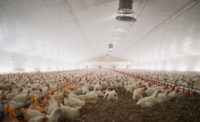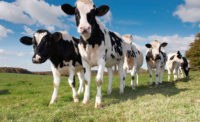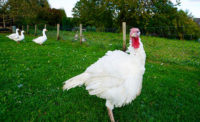As the winter wonderland is in full swing, it is important to think about our feathery friends in the barn, especially if we are incubating or have recent hatchlings. Incubating eggs are under constant stress during the winter months because of the changes in humidity and ambient temperature. Likewise, the first few days post hatching are very important because they are still developing their ability to control internal body temperature, which doesn’t fully develop until they are about 6 weeks old. Here are a few ideas to help get our chicks or poults off to a good start.
Incubation
The first thing to focus on is how we are incubating our eggs. There is not one single answer that yields the best results. Some companies recommend high humidity with a slightly lower temperature and others the opposite. What the focus should be is on what works best for your setup. Take a look at how well your hatch is. If it seems lower than what it ought to be, try taking a different approach to how the eggs are handled and incubated. Proper egg storage prior to incubation is imperative to a good hatch. Keeping early laid eggs at a physiological dormancy, between 55?F and 60?F, will help keep those eggs in good condition until incubation. The condition setup within the incubator is the first place that we can go to for improving our hatch. Incubation temperatures are extremely important, not only to ensure that our chicks or poults will hatch, but also for their future development.
Current research shows that the cooler temperatures typically hinder early development. This can lead to heart, lung, leg and digestive tract issues. As mentioned, there is no magic setting that works for every incubator or hatchery. Best results, however, typically are obtained between 95?F and 100.4?F with an ideal temperature for incubation being 99.5?F for most species. If you increase your incubation temperature, it is wise to decrease the humidity level. Based on how you set up your temperature, it is important to remember that increasing the temperature will shorten the incubation time of the eggs, but going too hot will cause your eggs to undergo heat stress causing damage if not monitored closely. As a general rule of thumb, staying below 101.5?F will minimize the possibility of heat stress on the developing embryo.
Eggs will start to produce their own heat toward the end of incubation and this must be taken into consideration when choosing your incubation temperature. Using the fan inside the incubator effectively will help reduce hot spots that can develop and help regulate temperature fluctuations. To check your temperature inside the incubator, use a traditional candy thermometer or a body temperature thermometer to keep inside the incubator. Additionally, buying a digital infrared thermometer to spot check throughout the incubator is another good practice. Be sure to log temperatures to help identify whether there is an issue with the incubator or ways to improve your next hatch.
Early hatchling growth
To help hatchlings get off to a good start, place them in a pen that has the correct temperature and give them access to feed and fresh water. Water at a young age is important to help jumpstart their digestive tract and to keep them well hydrated. It is also vital to have a nutritionally sound diet for adequate and proper growth. Additionally, be sure that there is enough dry bedding for the hatchlings. The recommended amount of bedding is approximately 2 to 4 inches of straw, shavings or other absorbent material.
However, the most important thing to have in the pen for the first few days is a brooding lamp. This will help keep the hatchlings at an ideal temperature because if birds are cold, they will start to huddle together for warmth. If they start to pile up on one another, this is a sign that they are still too cold and can suffocate the ones on the bottom of the pile. This is seen a lot with poults and can persist up to a week of age. Using a brooder lamp with a 250-watt red bulb can help decrease pile-ups. The red color helps the birds see better and the wattage will produce enough heat to keep them warm. Keep in mind that we want the pen to have enough space for all birds to be warmed by the brooder lamp and likewise enough area out from under the lamp for the birds as well.
If we place a brooder lamp in the pen and there is still a problem with birds piling up, using brooder board or cardboard barriers that are at least 8 inches tall will keep the birds confined to a smaller area to help with this problem. Not only will it keep them closer to the feed, water and heat, but it will also reduce direct drafts on the birds. The ideal temperature for hatchlings isn’t precise and changes with their age. Generally, hatchlings should enjoy temperatures around 95?F. After their first week, the brooder board can be taken out and the temperature can be decreased by about 5?F per week in the pen but should not go below 70?F. Be sure to continue watching the birds to ensure they do not start piling up again. This would indicate it is too cold for them.
This is just a general outline of how to ensure the best start for your birds this winter. Keeping the birds comfortable, well hydrated and fed properly will aid in keeping them warm and greatly increase the chances they will grow well. Whether they will become laying hens, broiler chickens or market turkeys, what we do their first few days will have an impact on how they perform in the future.






Report Abusive Comment